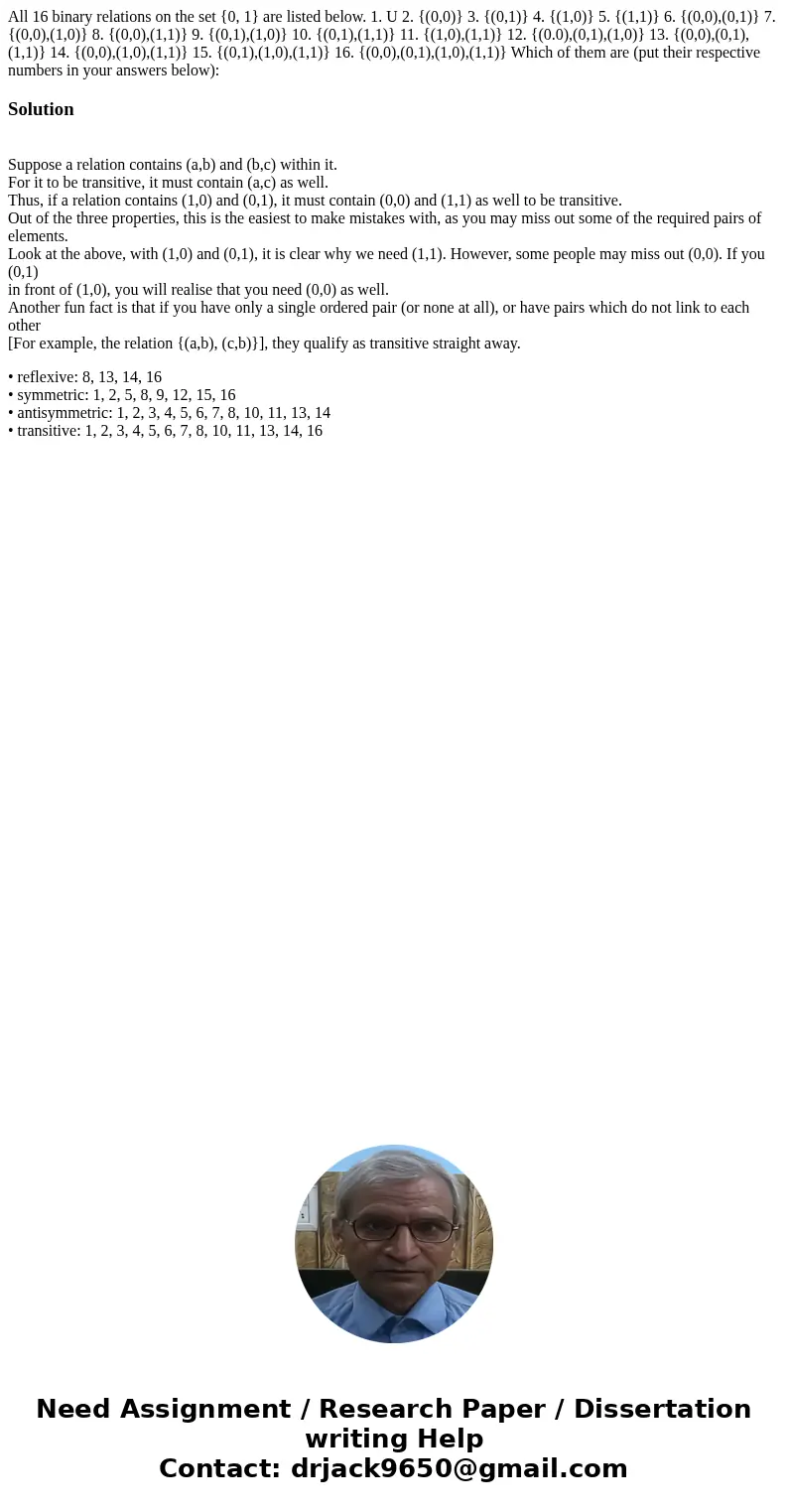All 16 binary relations on the set 0 1 are listed below 1 U
Solution
Suppose a relation contains (a,b) and (b,c) within it.
For it to be transitive, it must contain (a,c) as well.
Thus, if a relation contains (1,0) and (0,1), it must contain (0,0) and (1,1) as well to be transitive.
Out of the three properties, this is the easiest to make mistakes with, as you may miss out some of the required pairs of elements.
Look at the above, with (1,0) and (0,1), it is clear why we need (1,1). However, some people may miss out (0,0). If you (0,1)
in front of (1,0), you will realise that you need (0,0) as well.
Another fun fact is that if you have only a single ordered pair (or none at all), or have pairs which do not link to each other
[For example, the relation {(a,b), (c,b)}], they qualify as transitive straight away.
• reflexive: 8, 13, 14, 16
• symmetric: 1, 2, 5, 8, 9, 12, 15, 16
• antisymmetric: 1, 2, 3, 4, 5, 6, 7, 8, 10, 11, 13, 14
• transitive: 1, 2, 3, 4, 5, 6, 7, 8, 10, 11, 13, 14, 16

 Homework Sourse
Homework Sourse